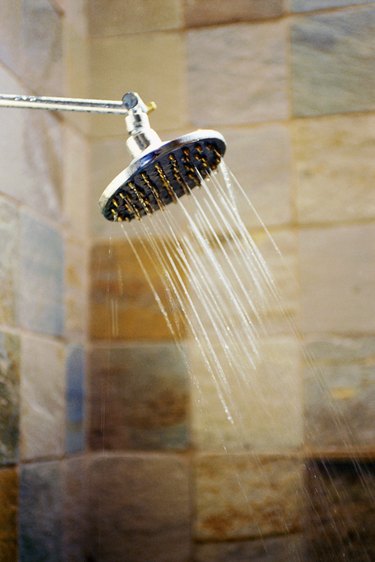Things You'll Need
15-lb. felt paper or plastic
Staple gun
Galvanized staples
Utility knife
Tape measure
Pencil
Cement board
Saw horses
Drill
1/2-inch drill bit
Safety glasses
Dust mask
Jig saw
Corrosion resistant screws
2-inch wide fiberglass tape
Pre-mixed mortar
Trowel

Cement board, also called backer board, is similar to drywall except the interior consists of cement, and the outer covering is water resistant. Cement board is the base material for tile surfaces, especially those in bathroom shower areas. When cement board is installed on the shower walls containing the valves, holes must be created in it. Cutting and installing the cement boards around the shower valves is accomplished using basic tools.
Step 1
Lay 15-pound builder's felt or plastic over the wall studs on the shower wall. Secure it to the studs using a staple gun and galvanized staples. Cut slits in the felt or plastic in the locations of the shower faucet, handles and head using a utility knife.
Video of the Day
Step 2
Measure up from the bottom of the shower to the location of each shower handle, the faucet and the shower head. Then measure over from the left or right side of the shower to the locations of each valve. Write down the measurements for each separately.
Step 3
Lay the cement backer board on top of two sawhorses. Measure to each valve location. Mark the locations with a pencil.
Step 4
Insert a one-half-inch diameter bit into a drill. Don a dust mask and safety goggles. Drill a hole all the way through the cement board at each pencil mark. Set the drill aside. Insert the blade of a jigsaw into one of the holes in the cement board. Cut a circular opening that is large enough to accommodate each valve.
Step 5
Place the cement board up to the wall to position the holes over each shower valve. Ensure there is at least a one-fourth-inch gap between the bottom of the board and the top of the shower pan.
Step 6
Secure the cement board to the wall studs using corrosion-resistant screws and a power drill. Space each screw every 6 to 8 inches down each wall stud.
Step 7
Apply 2-inch-wide fiberglass tape down the seams at the corners of the cement board to cover them completely.
Step 8
Open a tub of pre-mixed mortar. Scoop our one-half cup with a trowel. Spread the mortar over the tape until it is no longer visible.
Video of the Day